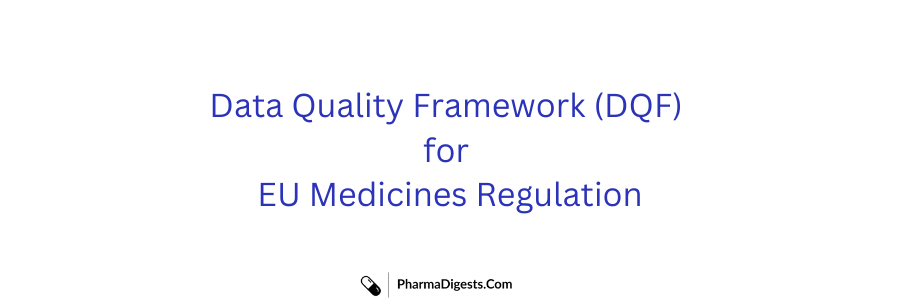Data Quality (DQ)
In general terms, quality is defined as an attribute of a product or service that defines the degree to which it meets customer and other stakeholder needs within statutory and regulatory requirements or its fitness for intended use.
Where Data quality is defined as: “fitness for purpose for users’ needs in relation to health research, policy making, and regulation and that the data reflect the reality, which they aim to represent”.
Data Quality Framework (DQF)
This framework provides general considerations on data quality that are relevant for regulatory decision making, definitions for data quality dimensions and sub-dimensions, as well as their characterisation and related metrics.
- It provides an analysis of what data quality actions and metrics should be considered in different use cases and introduces a maturity model to guide the evolution of automation to support data-driven regulatory decision making.
- This document is intended to be a general resource from which more focused recommendations can be derived for specific regulatory domains with specified metrics and checks.
Structure of the DQF
The DQF for EU medicines regulation is composed of two parts, reflecting different stages in the specification process.
The first part (general frame work) is designed to provide a coherent approach to DQ. To achieve this, it provides a common ground on different DQ aspects that apply to different data types and scenarios: definitions, DQ dimensions and examples of metrics covering such dimensions.
It further identifies general patterns for the applicability of DQ processes and it articulates a set of maturity models designed to drive increased automation of data-driven medicines regulatory decision making.
The second part (framework specialisation) specialises and eventually extends such generic
recommendations to cater for specific data types or regulatory questions. This part poses the basis for the derivation of actual implementable guidelines, which will need to evolve as data and technologies change over time.
DQ Determinants for Evidence Generation
When considering the overall quality of a dataset at the point of regulatory decision making, it is important to distinguish what contributes to quality, and what can be measured or controlled at what stage.
In this framework, such elements related to DQ are referred to as determinants and classified into three categories (see figure):
1. Foundational determinants are what affects the quality of data, but it’s not part of the data themselves. Examples of foundational determinants are the use of certified software systems to collect and process data, training, and audit processes etc.
2. Intrinsic determinants are what can be derived given a dataset and possibly some external generic knowledge, but without the context in which the data were generated, as well of the context the data will be used in (e.g., a scientific or regulatory question). Examples of intrinsic determinants are coherent or incoherent formatting, the presence of errors (e.g., truncation) or the plausibility of the data.
3. Question specific determinants pertain to aspects of DQ that cannot generally be defined
independently of a specific question or approach to analysis. Examples of question specific
determinants are the acceptability of the completeness of a dataset, or its level of approximation to answer a specific question.
In general, foundational determinants have a direct impact on DQ.
Read also:
- How the ICH Quality Guidelines Fit Into the Drug Development Process?
- Data Driven Medicines Regulation in European Union (EU)
Resource Person: BARBARA PIROLA

